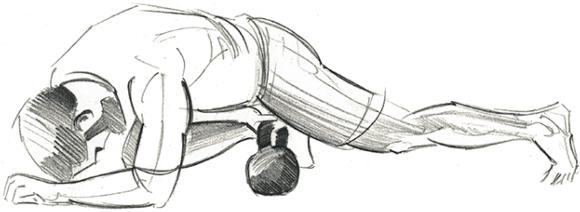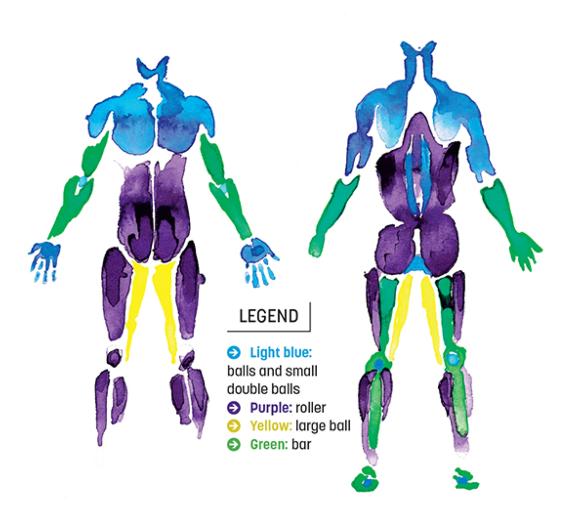Should massage be painful?
This is an excerpt from Modern Art and Science of Mobility, The by Aurelien Broussal-Derval,Stephane Ganneau.
There are two schools of thought on this. On one hand, there are devoted self-massagers who go far beyond the first level of responsiveness to massage and, as with any addiction, always need more. These people go so far as to use barbells, kettlebells, or weight plates as massage tools and believe that extreme work on active flexibility, which can produce bruising, creates a local adaptation. Often, this method is more painful than the alternative method of remaining within a tolerable pain zone and finishing with a pain-free level of intensity. This more reasonable approach states that, in general, bruises are signs of muscle injury rather than recovery.
As is often the case, your instinct and common sense should guide you. Do what you have to do; do what will help you. Listen to your body.
Your body is adaptable. Even in the short term, self-massage eases aches. In the long term, it increases your tolerance to pain (Jay et al. 2014), enabling you to work with tools that allow for more intense and advanced massages.
A little bit of pain is often necessary to determine the issue, but you should move very slowly; too much pain will lead to a protective reaction in the stimulated muscle when it relaxes. On the other hand, it can sometimes be life changing to work on pain by, for example, working on an old injury under the supervision of your health care professional.
In our opinion, selecting one tool over another, depending on the area being treated, is more important than which paradigm you adhere to. In this respect, Monteiro and his team believe that the range of motion is influenced by the massage tool and the duration of the massage (Monteiro et al. 2017).
Avoid Overly Bony Areas!
Remember that self-massage essentially targets soft tissues. There are certain areas that are not very muscular, such as the front of the shin area, that should be treated by self-massage nevertheless. However, other areas should be avoided altogether because they have almost no soft tissue or are often comprised of only ligaments.

To Guide You
Here is an anatomy guide for areas to massage with the appropriate tools. In our opinion, you should only switch to more intense tools if you cannot reach the deep areas or stimulate changes.

In this book, we will combine two approaches with some advanced mobility exercises.
SHOP

Get the latest insights with regular newsletters, plus periodic product information and special insider offers.
JOIN NOW


